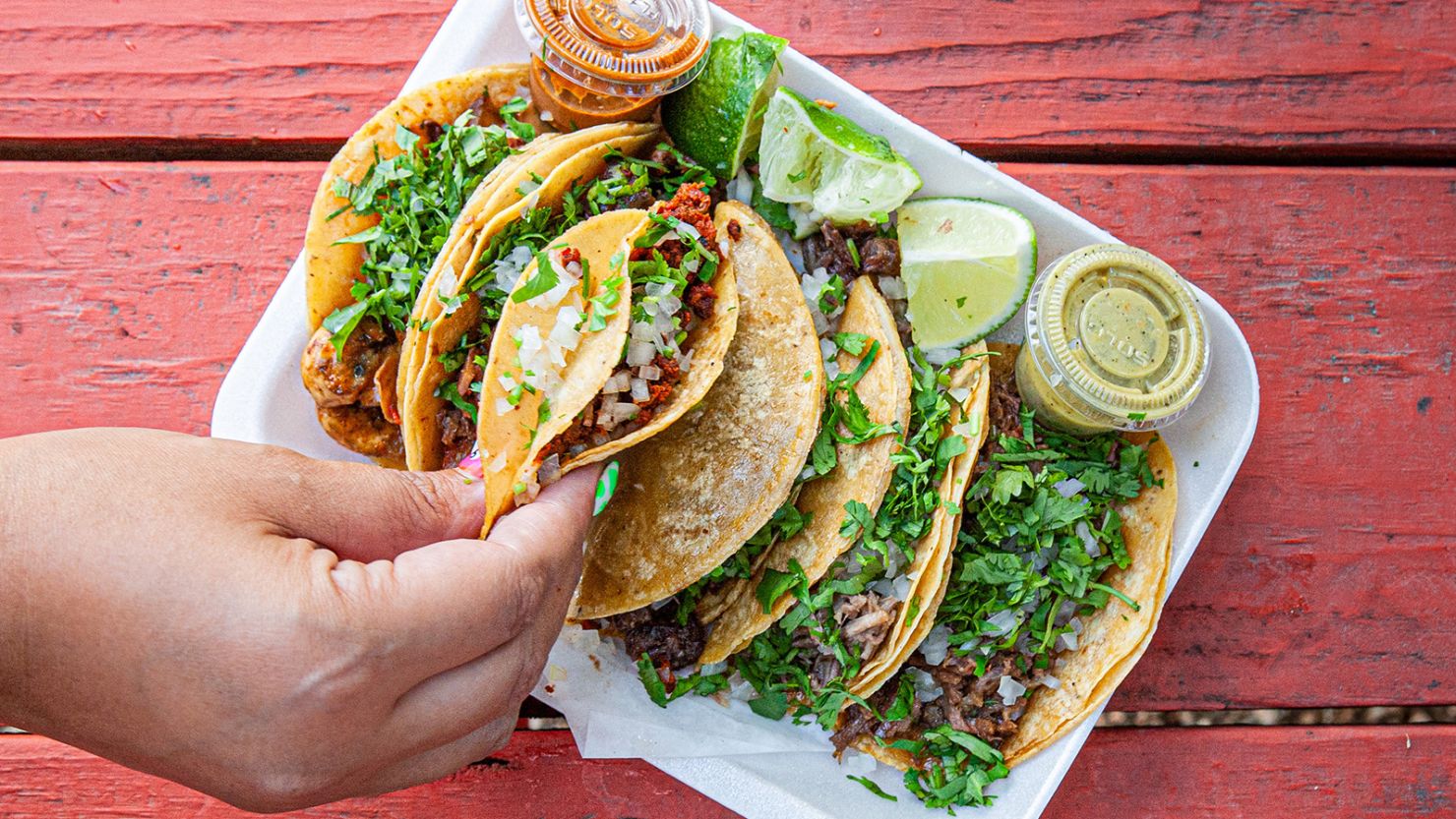Editor’s Note: CNN Original Series “Eva Longoria: Searching for Mexico” airs on CNN Sundays at 9 p.m. ET/PT. Sign up to CNN Travel’s four-part Unlocking Mexico newsletter for more on the country and its cuisine.
Austin is basking in plenty of praise ‘n’ glory these days.
The city is like the most popular student in high school – and people love everything about the kid. People want to listen to the same music, use the same technology and eat the same food as the kid. They’re ga-ga for the kid.
But José Ralat, who has held the title of taco editor at the venerable magazine Texas Monthly since 2019, isn’t so dazzled by the kid. At least when it comes to his beloved tacos.
Ralat contends the capital city of Texas has only recently started to deliver on its vaunted reputation – whipped up by what he calls “coastal elites” – for great tacos.
He made his case in a November 2022 article on the “The Top 25 New(ish) Taquerias in Texas” when he wrote: “One of the biggest surprises is that, finally, Austin tacos are earning the praise long heaped on them by out-of-towners and media personalities who mistook stylish mediocrity for regional excellence.”
Ralat followed up on this broadside with CNN Travel in a recent interview: “There’s long been this idea that Austin tacos are amazing. That Austin is a driver for taco culture due to its excellent food – and that’s just not been the case.”
It takes some passion, guts and expertise to call out longstanding prestige. But Ralat has those qualities – honed over many years – to do just that.
Ralat’s purview extends beyond tough-love criticism of Austin. He also has a lot to say about taco culture in the rest of Texas, where to get some of the best ones in the state and how its tacos stand up to another big state long associated with them.
How to create your dream job
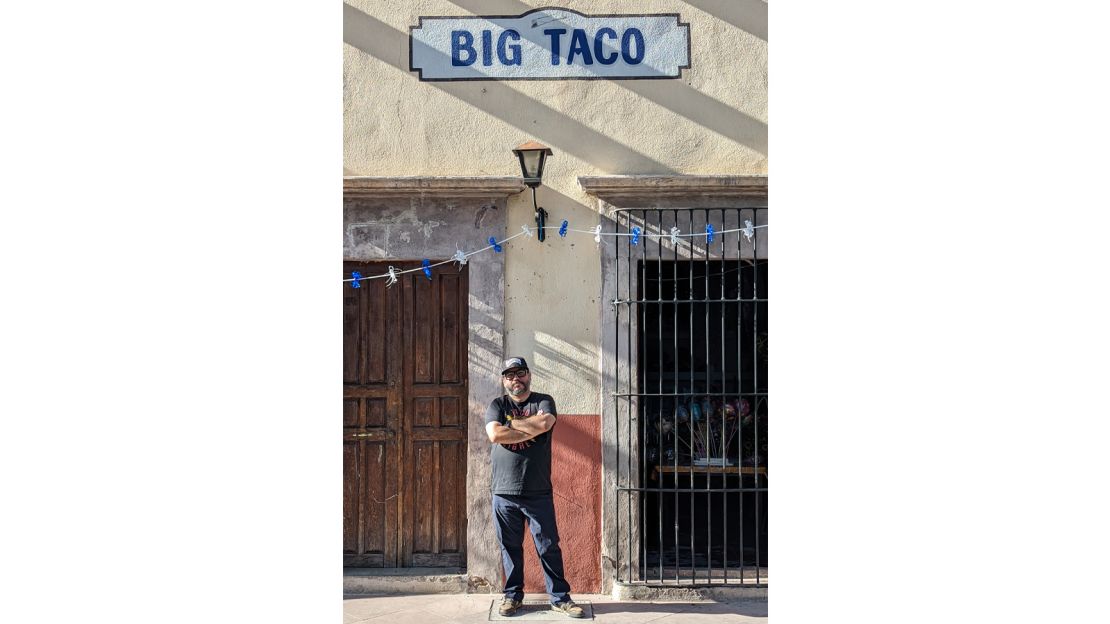
In 2015, Ralat co-edited a taco feature for Texas Monthly. He enjoyed it so much that he immediately pitched himself for a job that didn’t exist. And he was turned down. Repeatedly. But Ralat didn’t give up.
“After multiple freelance assignments for the magazine, I got the job. … It was a four-year argument.”
It’s a very singular title. Ralat said he’s the only taco editor in the United States – and the world. And after he landed the role, the University of Texas Press published Ralat’s book, “American Tacos: A History and Guide,” in 2020.
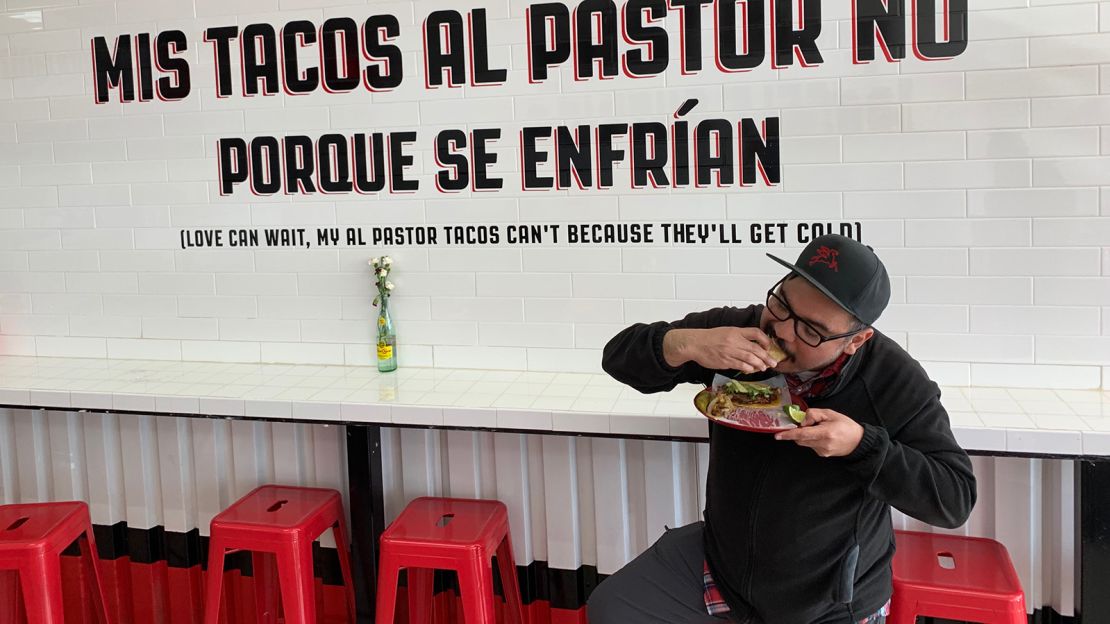
Ralat said there’s a lot more to his Texas Monthly duties than eatin’ tacos and rating them.
“Yes, I do criticism. Yes, I do trend pieces. My stories are superficially about the food, but more about the people.”
“Why tacos as the entry point? I was looking for something that was missing from journalism. But also something that I was very passionate about that connected my personal life with my professional life.
“I got into it mainly through falling in love with a young lady of Mexican descent from Texas. And she introduced me to breakfast tacos, and she downright forced me to eat cow tongue. … I was head over heels for both the food and the girl,” Ralat said.
All of this has given Ralat the perfect perch to observe and critique taco culture in Texas, which was born out of its long, intertwined history with Mexico.
How Austin is turning things around
When it comes to cuisine, “Austin is a Tex Mex town that historically has not had diversity until recently,” Ralat said.
“For example, they like to claim breakfast tacos.” Breakfast tacos didn’t come to Austin until roughly the late ’70s, he said. “Meanwhile, in the ‘50s and earlier, they were being eaten in the Rio Grande Valley, on the border with Mexico, and in San Antonio,” Ralat said.
Austin’s breakfast taco reputation “was concocted out of the commercialization of South by Southwest, tech companies opening offices there. … All these major tourist and media draws gave coastal elites this very narrow idea of what Austin was.”
But things are changing for the better. Ralat said 2019 was something of a turning point for Austin becoming a better taco town.
“What has happened now is you’ve had a small community of young taqueros and chefs who have decided to combine their talents and focus on quality while ignoring the noise.”
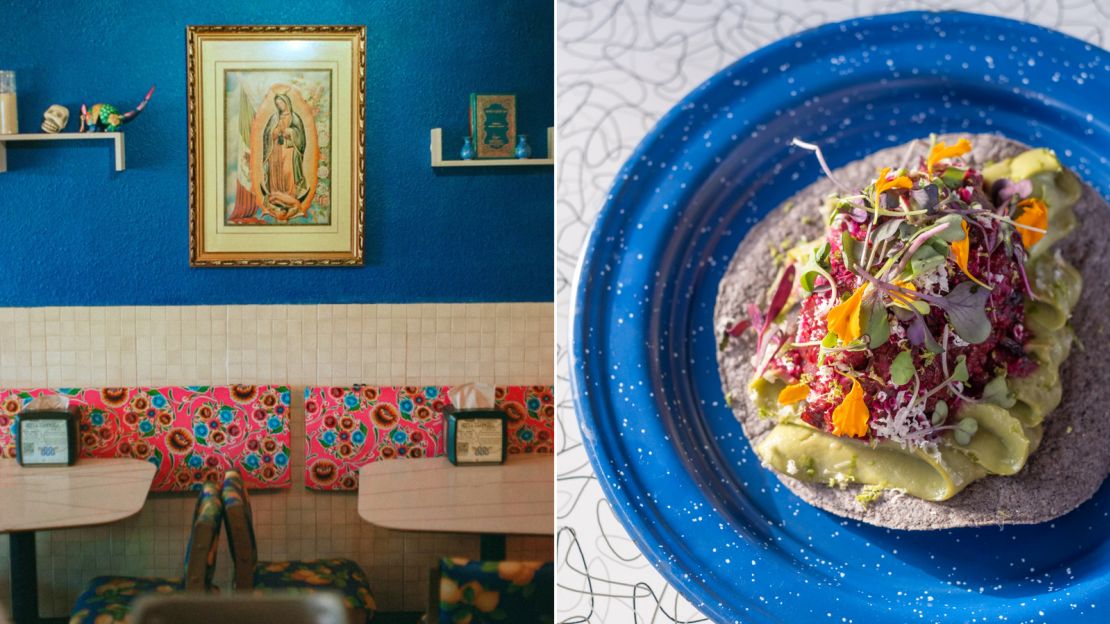
Take Nixta Taqueria in Austin. It specializes in hand-made tortillas using a nixtamalization process that indigenous peoples in what is now Mexico employed before the Spanish conquest.
“The fillings are predominately vegetarian. They do wonderful things with beets. Wonderful things with cauliflower. And they’re always trying something new. That flies in the face of meat-heavy Texas.”
What inspired these vegetarian leanings?
Chef Edgar Rico of Nixta said via emai, “I grew up in Visalia, California, which is near Fresno – the Salad Bowl of America. And I also spent my formative years as a chef in LA, which has unmatched farmers markets. … I was fascinated in making vegetables taste just as good as – if not better – than a piece of meat.”
Rico’s favorite veggie item is the beet “tartare” tostada “because people tend to not really love beets. This dish is such a great use of taking something that is generally not executed well when cooked. … When we add our salsa macha, horseradish, avocado crema, and other aromatics, it boosts more of the roasted notes in the beets and completely transforms the dish into this beautiful, umami bomb.”
Nixta isn’t the only new game in town.
Ralat also gave a shout-out to Cuantos Tacos, which focuses on “fantastic” Mexico City-style tacos.
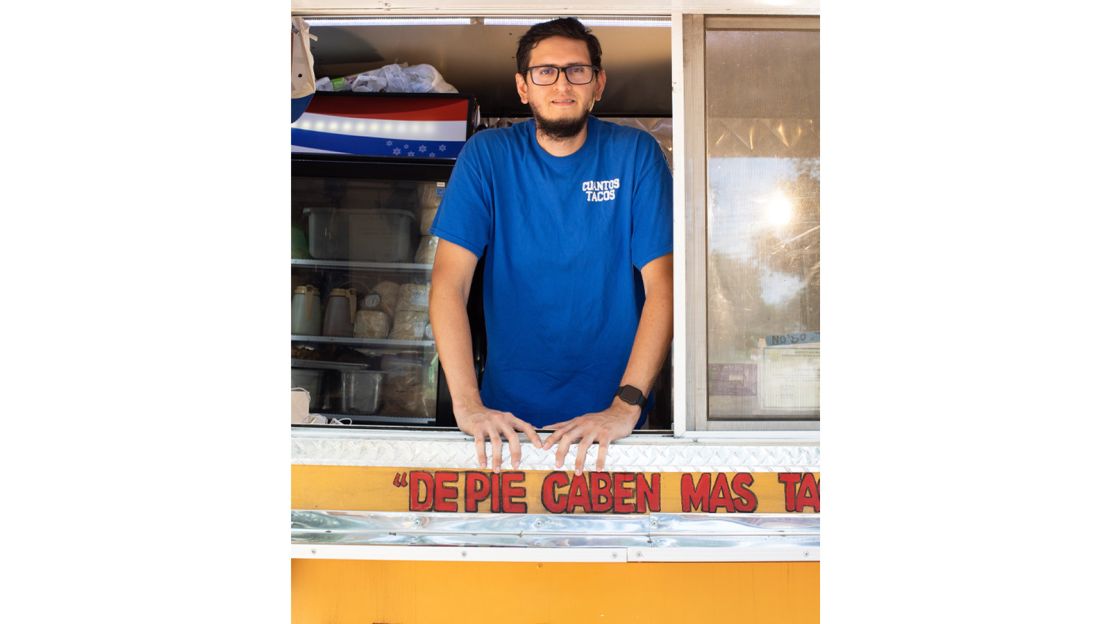
Luis “Beto” Robledo, founder and owner, told CNN Travel that his main focus “was to bring as close as possible Mexico City-style tacos here to Texas.”
He went back and forth to Mexico City for a couple of years to see how things were done and opened his place in 2019. Finding the right kind of tortilla was crucial for Robledo.
“Luckily we found some from a small mom and pop shop in San Antonio. … I knew these were the tortillas I needed to use for my business.” He said they’re worth the effort to have those nixtamalized tortillas delivered to Austin.
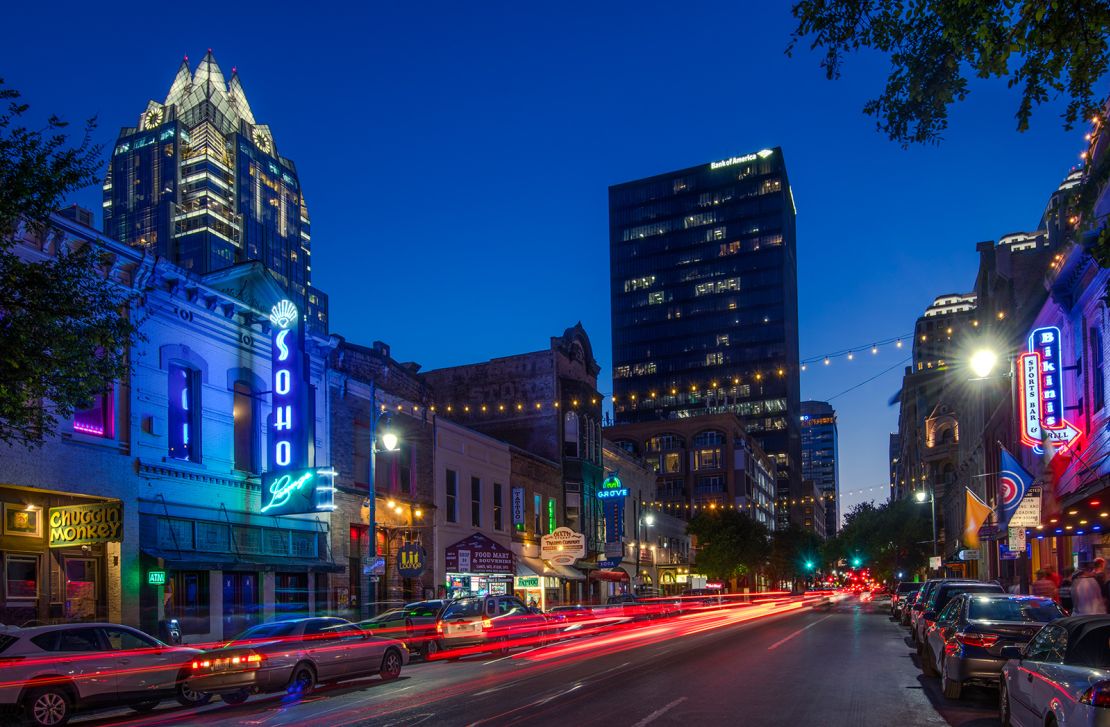
Ralat praises this new wave of taco makers in Austin.
“They look out for each other, and they look out for the community. And they welcome and encourage competition and fraternity, which is something that was previously really lacking.”
In his 2022 Texas Monthly piece, Ralat spotlighted some relative newcomers in Austin, including Con Todo, where he likes tacos Bistec Estilo Matamoros (a small, oil-bathed corn tortilla bearing chopped beef; a sprinkling of queso fresco, onion and cilantro; and a thin slice of avocado).
Passionate taco preferences
Want to start a heated argument in Texas? Try slapping a “best tacos” label on a city or region and gird yourself.
When it comes to tacos, “Texans are fiercely loyal to their cities and will cheer them on hell or high water and talk smack about other cities.”
“The idea is better approached as: ‘What do these cities specialize in that other cities don’t? What is regional?’ “
The geographical and cultural vastness of Texas comes into play here.
“There’s where you get things like San Antonio’s puffy taco. You get breakfast tacos in Brownsville and in the rest of the Rio Grande Valley. You have contemporary or modern tacos in Dallas that are really fascinating.”
But the idea of regional tacos is starting to dissipate as people move, Ralat said. “So now, it’s quite easy to find tacos from Brownsville and El Paso in Austin.”
Planning a trip with tacos in mind
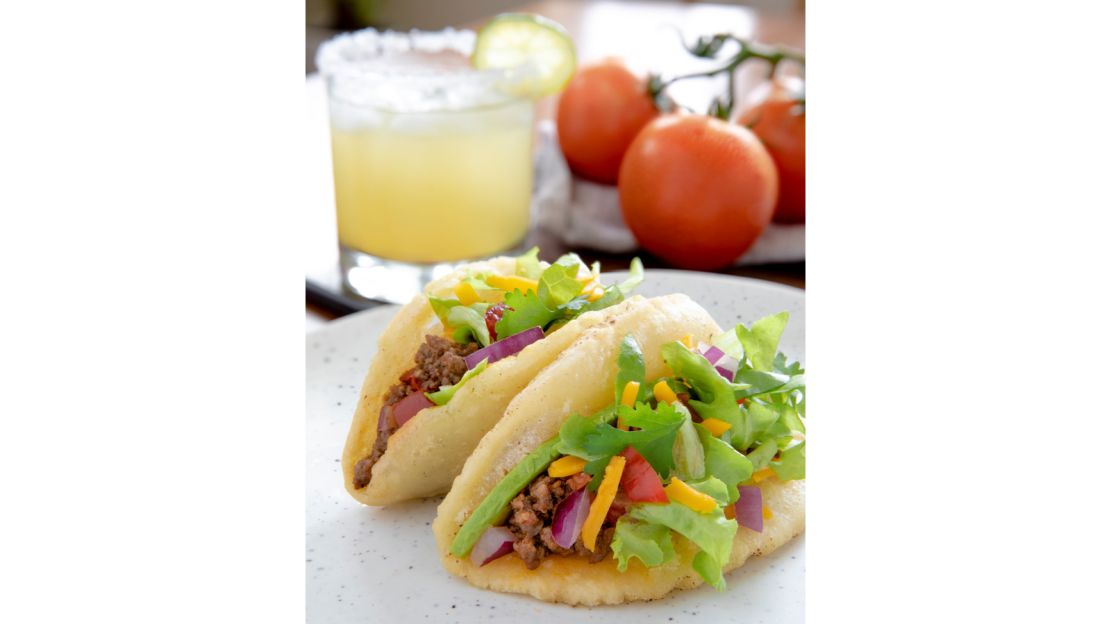
Texas is way, way too big to take in on a long weekend or even a weeklong trip. If visitors wanted to make tacos a key part of a trip, where in Texas should they go?
Ralat suggests heading about 80 miles (129 kilometers) south of Austin down Interstate 35.
“San Antonio is the culinary and cultural heart of Texas. It’s where Tex Mex was crystallized. … It’s one of the oldest cities in Texas, so it has wonderful history, not just the Alamo.
“You can visit Native American sites. You can shop. There are wonderful museums there. And you’ll get a taste of not just Texas but of Mexico.
“You’ll get the puffy taco, but then you’ll get dishes like the taco al pastor at this small taqueria called El Pastor Es Mi Señor. It’s one of my Top 25 … and arguably serves the best tacos al pastor in Texas.”
Alex Sarmiento, general manager of El Pastor, said he and his family members were inspired by the flavors they missed from growing up in Mexico City.
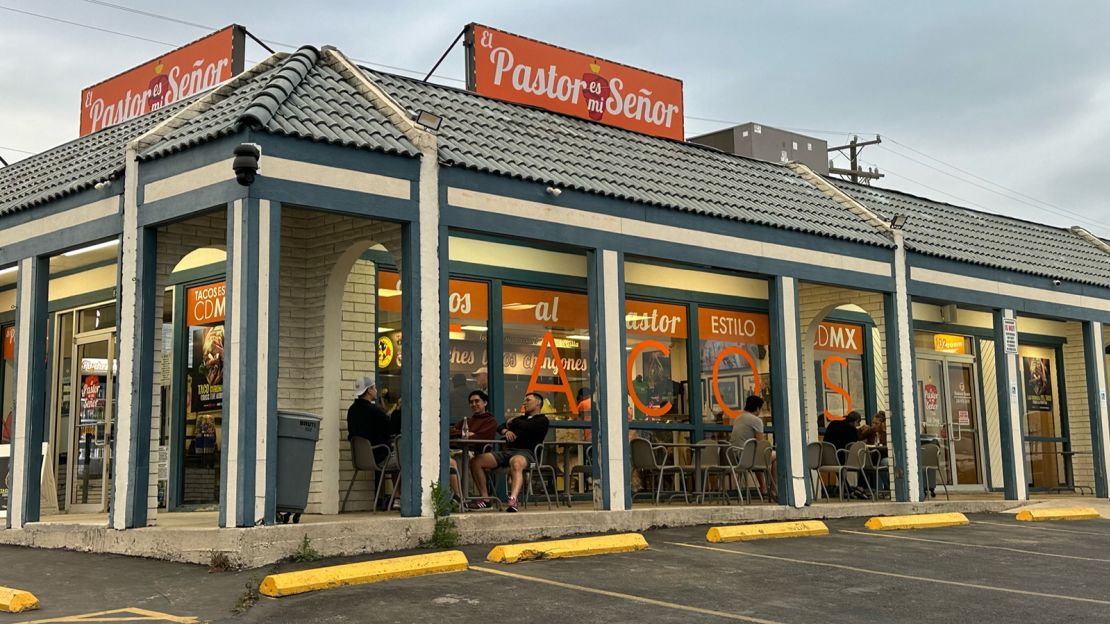
“I think our Tacos al Pastor are special because we put our love on every single taco. … They have all our childhood memories on every single taco,” he said via email. “This taqueria has always been about remembering from where we came from.”
Ralat also suggests these other spots in San Antonio:
• Ray’s Drive Inn: It “has been serving stellar San Antonio-style puffy tacos since the 1950s.”
• Stixs and Stone: “The Alamo City staple of barbacoa and Big Red are combined into magnificent barbacoa tacos in Big Red-infused corn tortillas.”
Smackdown: California vs. Texas
Ralat is unabashed when asked to compare the California taco scene with that of Texas.
“What state is better? HANDS DOWN Texas,” his voice louder and more emphatic than at any point in the interview.
When challenged to make a case for Texas, he cited:
• The Dallas-Fort Worth International Airport, which “ships in everything.”
• “The port city Houston gets everything.”
• Large vibrant immigrant population bringing tacos from Mexico and elsewhere.
Texans want to share their food, he said, and “the best way to share food in Texas is in a tortilla.”
Ralat resides in Dallas, hundreds of miles from the border with Mexico. But he can travel figuratively with food.
“Within five miles of my house, I can reach eight Mexican states. I think that’s great. California is big, but Texas is bigger.”
